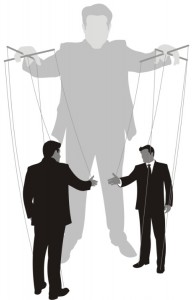Few leaders in American history have demonstrated the kind of innovative thinking, and ability to do very much with very little, than General Robert E. Lee evidenced during his time leading the Confederate Army of Northern Virginia.
As any entrepreneur starting their first business knows, working with limited resources (on a shoe-string budget) and a lot of sweat equity, is par for the course. For all you start-up entrepreneurs out there, this article is for you; General Lee mastered the art of maximizing output and we all can learn a ton from this man’s accomplishments.
Looking back to the civil war for entrepreneurial inspiration once again (see my article on Lincoln by clicking here), we can view the Union army as a Google, and the Confederate Army as a new start-up, hoping to walk away with a lucrative takeout offer.
Contents
Facing a Daunting Competitor
Challenged with overwhelming odds against himself and his army in troop numbers, supplies, and military infrastructure, and continually facing a number of disadvantages from his own side, Lee succeeded for four years in not only challenging, but for the large part defeating, a numerically and resourcefully superior enemy. It is easy to see the parallels between Lee’s struggle (and his army’s) and the challenges facing innovators and entrepreneurs hoping to enter existing markets and challenge the big fish that run them today.
Lee, throughout his career in the Confederate Army, demonstrated the ability not only to manage and utilize his own meager resources as effectively as possible, but also to mitigate the advantages of a superior competitor by inspiring his own troops and followers to work twice as hard, and fight twice as long, because of their dedication and commitment to the brand (notably individual rights and the freedom to determine one’s own laws free from overarching government) for which he served as figurehead from 1861-1865.
Breaking down Robert E. Lee’s entrepreneurial characteristics is a character study of what it takes to be an effective, efficient, and engaging leader.
Find Talent (in the information age, talented advice comes free)
First and foremost, to counter the resource and financial disadvantage he faced compared to the Union Army, Lee did what most successful entrepreneurs do when they take on a daunting competitor; he trained, researched, promoted, and managed one of the most efficient middle management teams in military history. Whether it be Stonewall Jackson, who Lee promoted from a simple brigade commander to one of the most prominent roles in his army, to James Longstreet, who Lee moved from command to command to shore up weak spots, Lee had an eye for adept and adaptable talent.
What made these other commanders essential to Lee was their ability not only to take and follow orders efficiently, but also to command their own segments of the army (their own divisions of the company, if you will) not only as independent bodies, but as integrated and interdependent pieces of the greater organization.
Lee demonstrated understanding of one of the most integral parts of effective entrepreneurial leadership; surround yourself with good people, but also know when to avoid micro-managing or interfering with their operations and decisions.
Whereas the Union Army reflected constant interference from Washington D.C. and civilian officials (not all that different from the role of government these days), Lee’s autonomy from Jefferson Davis allowed him to operate much more effectively than his numerous Union counterparts. He was not beholden to or encumbered by the restrictions, bureaucracy, and red tape that continually bogged down the movement and leadership of the opposing Army of the Potomac.
much more effectively than his numerous Union counterparts. He was not beholden to or encumbered by the restrictions, bureaucracy, and red tape that continually bogged down the movement and leadership of the opposing Army of the Potomac.
As a Small Business You Have Advantages over the Big Fish
Like any small business today, Lee had the advantage of being able to adapt quickly on the fly, responding to challenges and Union advances with a speed that the Army of the Potomac never matched. Without the bureaucracy, red-tape, and unwieldy nature of a larger organization, Lee’s smaller organization was able to perform the same service (in this case, make war) with much more success than his more equipped counterparts.
Build a Tribe by Sticking to a Clear Message
Perhaps the most essential entrepreneurial trait that Lee demonstrated during his time as the Confederate commander was his ability to move people behind his leadership, inspiring unprecedented devotion among both his soldiers and the Confederate people as a whole.
By making smart decisions that were usually in the best interest of the entire army (always make decisions and changes based on what’s best for your customer, not your own desires), from the command staff down to the foot soldier, and by continually providing steadfast and unwavering leadership in the face of overwhelming odds, Lee was able to inspire an almost religious devotion among his people (Apple managed to establish the same sort of loyal following in the tech-market based on making its product easier to use and more attractive - precisely what consumers wanted).
As any entrepreneur knows, the only way to take on an intimidating competitor is to ensure that your staff and supporters (customers) are as devoted and dedicated to the cause as you are. You must connect in a way that reaches far beyond the product you are selling (there must be a greater good message in what you do). It was this ability to inspire and lead that helped Lee keep his army effective in combat for so long against a numerically superior foe.
While entrepreneurship is probably not the first thing that comes to mind when thinking of Robert E. Lee, the parallels between Lee’s model of leadership and successful entrepreneurial leadership today are undeniable. Not only do we see the symbolic connection of Lee fighting against what many felt were the overbearing whims and reach of the federal government, just as many successful businessmen experience dealing with government today; we also see how he demonstrated the skills and qualities necessary to challenge a better-supported and better-financed competitor, in the areas of resource management, leadership training and management, and inspirational leadership.
By convincing his troops and the people that supported them of the effectiveness and legitimacy of their position (much as a CEO must convince his customers and staff of the effectiveness of their product, brand, or service) Lee was able to challenge (and for much of the time, defeat) a greater competitor. That should be a struggle that many entrepreneurs can relate to when attempting to break into a market or field today.
The Entrepreneurial Repertoire of Robert E. Lee
- Identifying, promoting, and managing successful thinkers and fellow leaders to help ensure orders, communications, and strategies were understood by everyone in his organization.
- Giving those leaders clear and effective plans and strategies to carry out as a whole.
- Managing, allocating, and utilizing his limited resources in the most efficient way.
- Leveraging his advantage of being unencumbered by the same bureaucracy, politicking, and backstabbing that plagued the Army of the Potomac and its micro-management from Washington D.C., to move his army quickly and more effectively, thus prolonging the war. Lee utilized the adaptability and flexibility of his smaller organization as effectively as he could.
- Utilizing superior communication and public speaking skills to motivate, inspire, and exhort both his soldiers and civilian followers, building his own labor force and ensuring his supporters would work at their most effective levels for him in carrying out his plans.
If you are starting a new venture and trying to compete in a market dominated by big fish, don’t be discouraged nor intimidated. There are advantages to being a small fish swimming with sharks.
Stay hungry
Aaron














